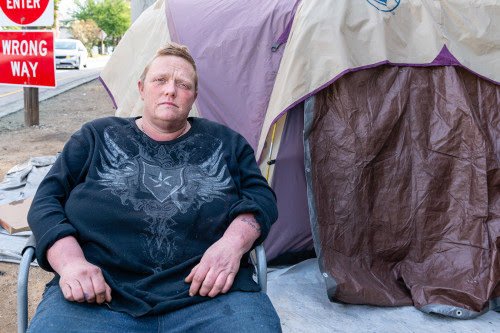
While the whole world is focused on the risk of the coronavirus first identified in Wuhan, China, becoming a global pandemic, there is another danger lurking in the US: medieval diseases such as typhus, typhoid fever and tuberculosis are re-emerging in California.
Homelessness and public health crisis
This is due to the growing homeless population in the state, which according to the US Department of Housing and Urban Development’s 2018 Annual Homeless Assessment Report to Congress accounts for 30% of the nation’s homeless and 49% of all unsheltered individuals, despite having only 12% of the country’s total population. The majority of the homeless population are concentrated in Los Angeles and San Francisco.
California’s homeless population is estimated to number almost 151,000, and the unsanitary conditions they foster are becoming a public health crisis. Trash, used hypodermic needles, and human waste littering California’s cities have led to increased numbers of rats and fleas carrying deadly diseases, with reported cases of typhus, hepatitis A, tuberculosis, and staph spreading aggressively in San Francisco and other California cities.
What’s worse, a new public health threat may be on the verge of making a deadly appearance: bubonic plague – known in the Middle Ages as the “Black Death” that killed about 50 million people, or 60% of Europe’s entire population. Because of environmental lobbyists’ efforts against the use of second-generation anticoagulant rodenticides (SGARs), for the past five years, LA’s Department of Recreation and Parks has forgone the use of SGARs, posing a challenge to culling of California’s burgeoning population of disease-borne rats.
California Governor Gavin Newsom said in his State of the State speech in February 2019, “Our homeless crisis is increasingly becoming a public-health crisis,” citing outbreaks of hepatitis A in San Diego county, syphilis in Sonoma county, and typhus in Los Angeles county. He added in unbelief, “Typhus … a medieval disease. In California. In 2019.”
These diseases receive the “medieval” moniker at times because people in that era lived in squalid conditions without clean water or sewage treatment, says Jeffrey Klausner, a professor of medicine and public health at the University of California, Los Angeles (UCLA). This is similar to the current environment among the homeless population, where diseases spread quickly and widely, helped along by sidewalks serving as open sewers contaminated with human waste, crowded living conditions, weakened immune systems, and limited access to health care.
Preventing epidemics from becoming pandemic
Moreover, these infectious diseases cannot be contained within the homeless population and can quickly spread to the wider population. In response, last month the state of California began to tackle this problem by purchasing trailer homes from the Federal Emergency Management Agency (FEMA) previously used for wildfire evacuees. This is part of a billion-dollar plan to address homelessness, using FEMA trailers to provide emergency housing with plans eventually to turn unused federal lands into sites for more robust shelters or permanent supportive housing.
The timing of FEMA emergency housing is critical given the context of the coronavirus outbreak that has pushed pandemic and public health issues to the forefront of domestic priorities in the US and elsewhere. It has also highlighted the need for multilateral cooperation in addressing global challenges and crisis management.
Writing in The Washington Post on pandemic preparedness, the former director of the US Centers for Disease Control and Prevention (CDC), Tom Frieden, warned that the US is not prepared for the next pandemic. The Ebola outbreak between 2014 and 2016 and the current Wuhan virus outbreak reminds us that humanity shares the common enemy of dangerous microbes.
Frieden also warns that a global influenza pandemic could kill tens of millions of people and devastate the world economy, similar to the 1918 Spanish flu that killed 50 million people worldwide including more than half a million Americans. Indeed, currently the major health threat in the US is influenza, which according to CDC has already killed an estimated 20,000 people and infected some 15 million Americans since last October.
At present, short-term remedial measures such as patrols to pick up human waste and used syringes are in place to help contain medieval diseases on the streets of San Francisco. But longer-term solutions are needed, calling for cooperation between the state and federal governments.
Given that California’s 12th Congressional District, which lies in San Francisco, has been represented by US House Speaker Nancy Pelosi since 2013, this is a good opportunity for her and President Donald Trump to put aside their differences and work together for the greater public good of pandemic preparedness in the US.
California not only needs better governance to tackle the homeless, drug, and public health problems at the local level, but at the national level the federal government needs personnel and structure in place to prepare and respond to emerging infectious disease threats. As former president Barack Obama’s homeland-security adviser Lisa Monaco argued, without funding and institutional structure in place to “defend forward,” the US will always be on its back foot.
At the international level, the World Health Organization needs more support, and the US should continue leading multilateral efforts such as the Global Health Security Agenda launched in 2014 to address the Ebola outbreak. Because as we have also witnessed with the recent Wuhan virus outbreak, pandemics are not cases of Africa or China against the world, but rather of humanity against the virus.
*story by Asia Times